Results 1 to 10 of 25
Hybrid View
-
11-23-2015, 04:59 PM #1Senior Member



- Join Date
- Apr 2012
- Location
- Diamond Bar, CA
- Posts
- 6,553
Thanked: 3215
Try Zak’s website, The Shivering Beggar for some great photos and info.
-
The Following User Says Thank You to Euclid440 For This Useful Post:
Dachsmith (08-23-2018)
-
11-23-2015, 05:21 PM #2

Lohar from the Coupe Chou Club has a Sirhenry razor in Damas. I'll ask him some pictures.
Here are some pictures of a surgeon set in damas too, from the same cutler.



-
The Following 3 Users Say Thank You to Thaeris For This Useful Post:
engine46 (11-25-2015), ScienceGuy (11-23-2015), Wolfpack34 (11-23-2015)
-
11-23-2015, 05:29 PM #3

Got it :
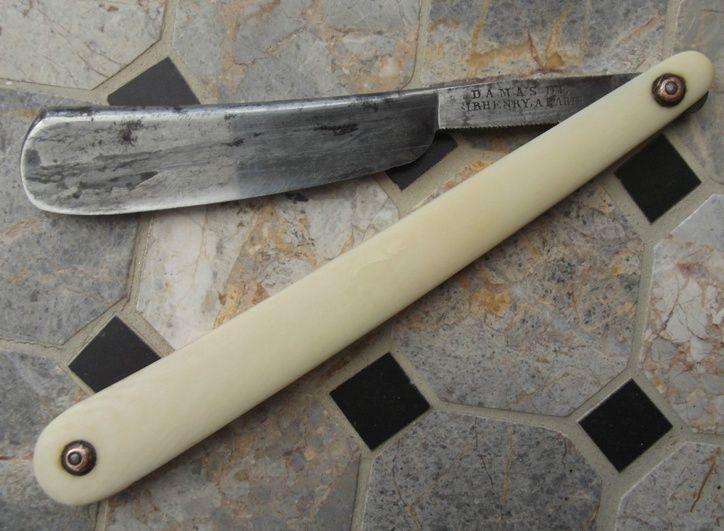
-
11-23-2015, 05:35 PM #4

By the way, why is there's a picture of Jacques Perret (early 20th) next to the book of Jean-Jacques Perret (mid 17th) ? ^^
-
The Following 2 Users Say Thank You to Thaeris For This Useful Post:
Martin103 (11-25-2015), ScienceGuy (11-23-2015)
-
11-23-2015, 08:42 PM #5Junior Member

- Join Date
- Mar 2012
- Location
- Switzerland
- Posts
- 7
Thanked: 0
Thank you for the Sirhenry blade pictures. These are very interesting for me. Would it be possible to send me some bigger detailed pictures of this SirHenry razor blade?
I visited the depot of the “musée des art et métier” in Paris to look at Damascus steel samples of Sirhenry (damas de Sirhenry). Unfortunately the surface of these samples didn’t show any patterns, as seen on drawings of the “Sociéte d’encouragement pour l’industrie nationale”.
I forgot to list following other French cutler who made razors that have been sold as “Damascus razors”:
Bernard in Couard 1823: “Dépot de Rasoirs de Damas, de la fabrique du sieur Bernard, à Couard, près d’Autun (Saòne-et-Loire) ”
-
11-23-2015, 08:51 PM #6

I'll ask the owner

-
11-25-2015, 05:11 PM #7

To the best of my knowledge, there were no razors made with Damascus steel.
James Stodart and Joseph Rodgers both advertised using Devangari script to claim they were using 'wootz' steel, but none of them exhibited the characteristic patterning of real Damascus steel.
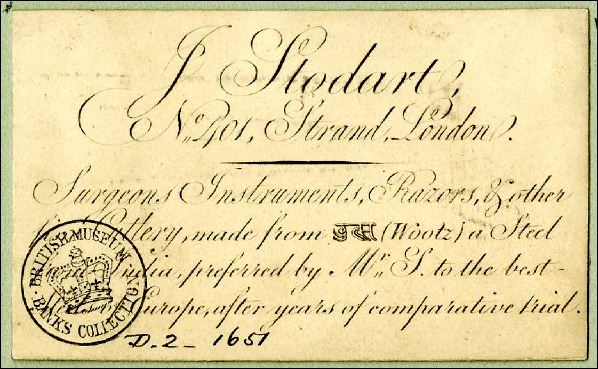
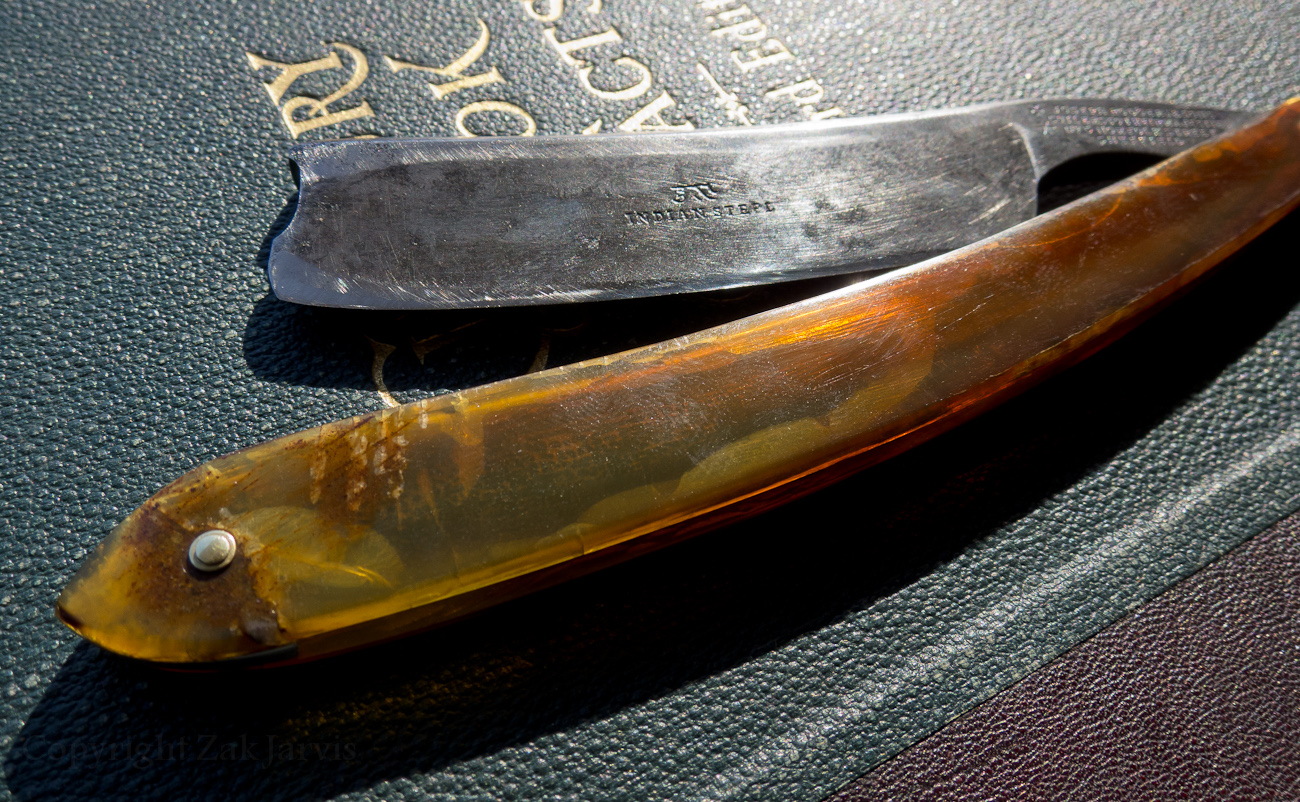
George Wostenholm and several different French manufacturers produced blades with etchings meant to mimic the look, but it was wholly artificial. It was done by painting or stamping the pattern onto the blade with something that resisted acid, then painting a highly corrosive acid over top that. The patterning was not a feature of the metal itself, but a decoration put on top of it.
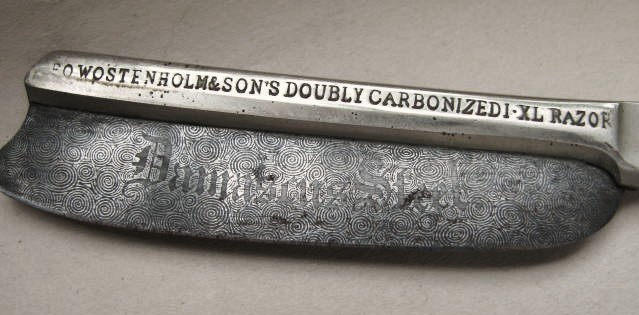
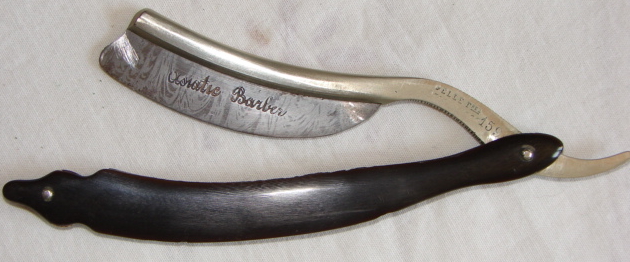
The lancets that Thaeris showed pictures of are corroded by blood left on the blades. It's a very typical pattern when liquid is left on the steel, and not a sign of patterning.
An example I have:
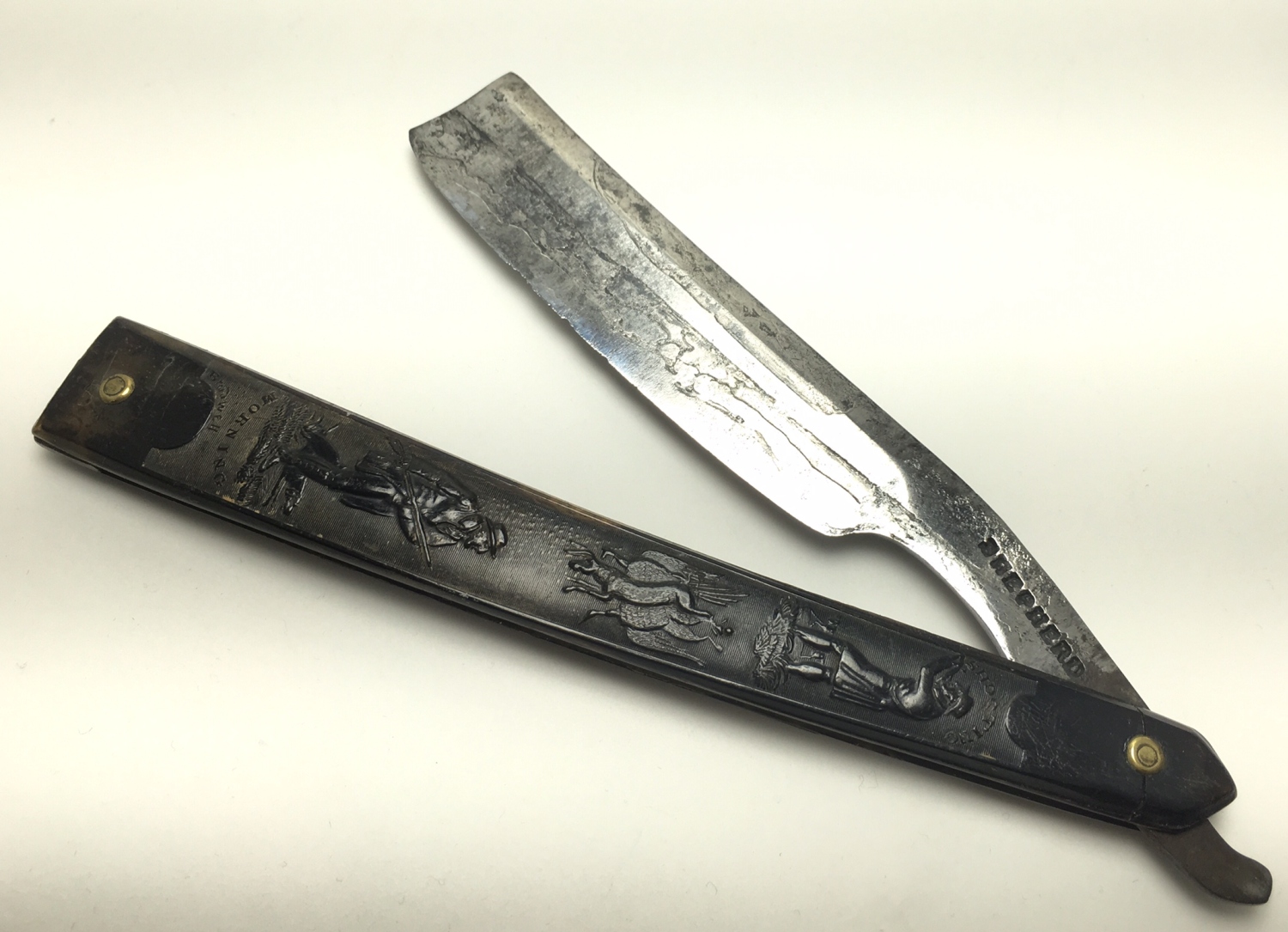
This razor was corroded by someone dying the scales black without any care for keeping the dye off the blade. You can clearly see the liquid patterns where the scales were pressed against the steel.
A closeup of the damage:

This is a picture of the real deal:
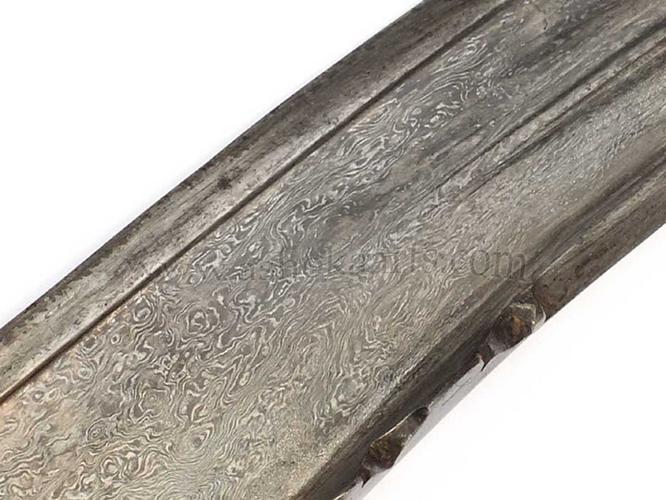 -Zak Jarvis. Writer. Artist. Bon vivant.
-Zak Jarvis. Writer. Artist. Bon vivant.
-
-
11-25-2015, 06:27 PM #8

Last edited by engine46; 11-25-2015 at 06:36 PM.


 57Likes
57Likes LinkBack URL
LinkBack URL About LinkBacks
About LinkBacks






 Reply With Quote
Reply With Quote


